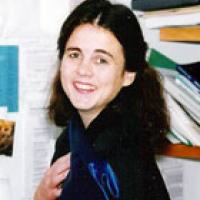The Ruth I. Michler Memorial Prize of the AWM is awarded annually to a woman recently promoted to associate professor or an equivalent position in the mathematical sciences. The prize provides a fellowship for the awardee and enables her to focus on her research in the stimulating environment of the Cornell University Department during a semester that is free from teaching obligations. Recently promoted associate professors face many challenges as they prepare to take on greater leadership in research and in the profession. The Ruth I. Michler Memorial Prize honors outstanding women at this stage of their careers. Each year, the Michler Fellow is invited to give a lecture to an audience of faculty and graduate students.
Upcoming Lectures
The Spring 2026 Michler Lecture Series will be held on January 29, 2026 in Malott 532 from 4:00 - 5:00 p.m.
Speaker: Ling Xiao, University of Connecticut
Poster including title and abstract are forthcoming.
A reception will be held prior to the lecture in 532 Malott Hall from 3:30-4:00 p.m.
For accessibility/accommodations contact Heather Peterson.

